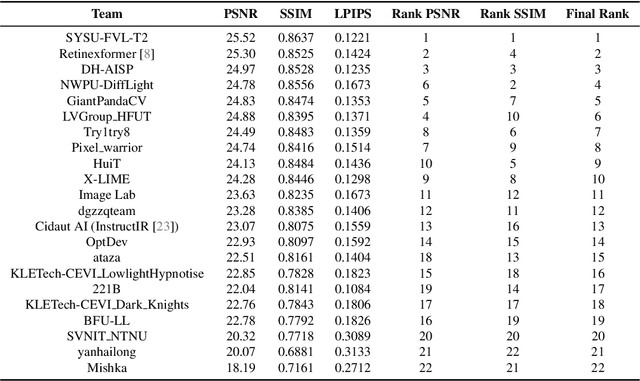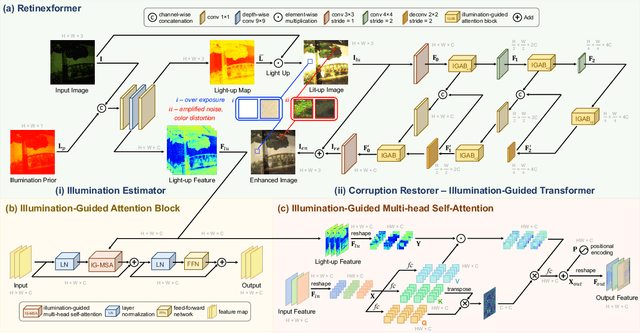Jingyi Zhang
MGFFD-VLM: Multi-Granularity Prompt Learning for Face Forgery Detection with VLM
Jul 16, 2025Abstract:Recent studies have utilized visual large language models (VLMs) to answer not only "Is this face a forgery?" but also "Why is the face a forgery?" These studies introduced forgery-related attributes, such as forgery location and type, to construct deepfake VQA datasets and train VLMs, achieving high accuracy while providing human-understandable explanatory text descriptions. However, these methods still have limitations. For example, they do not fully leverage face quality-related attributes, which are often abnormal in forged faces, and they lack effective training strategies for forgery-aware VLMs. In this paper, we extend the VQA dataset to create DD-VQA+, which features a richer set of attributes and a more diverse range of samples. Furthermore, we introduce a novel forgery detection framework, MGFFD-VLM, which integrates an Attribute-Driven Hybrid LoRA Strategy to enhance the capabilities of Visual Large Language Models (VLMs). Additionally, our framework incorporates Multi-Granularity Prompt Learning and a Forgery-Aware Training Strategy. By transforming classification and forgery segmentation results into prompts, our method not only improves forgery classification but also enhances interpretability. To further boost detection performance, we design multiple forgery-related auxiliary losses. Experimental results demonstrate that our approach surpasses existing methods in both text-based forgery judgment and analysis, achieving superior accuracy.
R1-ShareVL: Incentivizing Reasoning Capability of Multimodal Large Language Models via Share-GRPO
May 22, 2025Abstract:In this work, we aim to incentivize the reasoning ability of Multimodal Large Language Models (MLLMs) via reinforcement learning (RL) and develop an effective approach that mitigates the sparse reward and advantage vanishing issues during RL. To this end, we propose Share-GRPO, a novel RL approach that tackle these issues by exploring and sharing diverse reasoning trajectories over expanded question space. Specifically, Share-GRPO first expands the question space for a given question via data transformation techniques, and then encourages MLLM to effectively explore diverse reasoning trajectories over the expanded question space and shares the discovered reasoning trajectories across the expanded questions during RL. In addition, Share-GRPO also shares reward information during advantage computation, which estimates solution advantages hierarchically across and within question variants, allowing more accurate estimation of relative advantages and improving the stability of policy training. Extensive evaluations over six widely-used reasoning benchmarks showcase the superior performance of our method. Code will be available at https://github.com/HJYao00/R1-ShareVL.
R1-VL: Learning to Reason with Multimodal Large Language Models via Step-wise Group Relative Policy Optimization
Mar 17, 2025Abstract:Recent studies generally enhance MLLMs' reasoning capabilities via supervised fine-tuning on high-quality chain-of-thought reasoning data, which often leads models to merely imitate successful reasoning paths without understanding what the wrong reasoning paths are. In this work, we aim to enhance the MLLMs' reasoning ability beyond passively imitating positive reasoning paths. To this end, we design Step-wise Group Relative Policy Optimization (StepGRPO), a new online reinforcement learning framework that enables MLLMs to self-improve reasoning ability via simple, effective and dense step-wise rewarding. Specifically, StepGRPO introduces two novel rule-based reasoning rewards: Step-wise Reasoning Accuracy Reward (StepRAR) and Step-wise Reasoning Validity Reward (StepRVR). StepRAR rewards the reasoning paths that contain necessary intermediate reasoning steps via a soft key-step matching technique, while StepRAR rewards reasoning paths that follow a well-structured and logically consistent reasoning process through a reasoning completeness and logic evaluation strategy. With the proposed StepGRPO, we introduce R1-VL, a series of MLLMs with outstanding capabilities in step-by-step reasoning. Extensive experiments over 8 benchmarks demonstrate the superiority of our methods.
AI Guide Dog: Egocentric Path Prediction on Smartphone
Jan 14, 2025



Abstract:This paper introduces AI Guide Dog (AIGD), a lightweight egocentric navigation assistance system for visually impaired individuals, designed for real-time deployment on smartphones. AIGD addresses key challenges in blind navigation by employing a vision-only, multi-label classification approach to predict directional commands, ensuring safe traversal across diverse environments. We propose a novel technique to enable goal-based outdoor navigation by integrating GPS signals and high-level directions, while also addressing uncertain multi-path predictions for destination-free indoor navigation. Our generalized model is the first navigation assistance system to handle both goal-oriented and exploratory navigation scenarios across indoor and outdoor settings, establishing a new state-of-the-art in blind navigation. We present methods, datasets, evaluations, and deployment insights to encourage further innovations in assistive navigation systems.
Mulberry: Empowering MLLM with o1-like Reasoning and Reflection via Collective Monte Carlo Tree Search
Dec 24, 2024



Abstract:In this work, we aim to develop an MLLM that understands and solves questions by learning to create each intermediate step of the reasoning involved till the final answer. To this end, we propose Collective Monte Carlo Tree Search (CoMCTS), a new learning-to-reason method for MLLMs, which introduces the concept of collective learning into ``tree search'' for effective and efficient reasoning-path searching and learning. The core idea of CoMCTS is to leverage collective knowledge from multiple models to collaboratively conjecture, search and identify effective reasoning paths toward correct answers via four iterative operations including Expansion, Simulation and Error Positioning, Backpropagation, and Selection. Using CoMCTS, we construct Mulberry-260k, a multimodal dataset with a tree of rich, explicit and well-defined reasoning nodes for each question. With Mulberry-260k, we perform collective SFT to train our model, Mulberry, a series of MLLMs with o1-like step-by-step Reasoning and Reflection capabilities. Extensive experiments demonstrate the superiority of our proposed methods on various benchmarks. Code will be available at https://github.com/HJYao00/Mulberry
RoomTour3D: Geometry-Aware Video-Instruction Tuning for Embodied Navigation
Dec 11, 2024Abstract:Vision-and-Language Navigation (VLN) suffers from the limited diversity and scale of training data, primarily constrained by the manual curation of existing simulators. To address this, we introduce RoomTour3D, a video-instruction dataset derived from web-based room tour videos that capture real-world indoor spaces and human walking demonstrations. Unlike existing VLN datasets, RoomTour3D leverages the scale and diversity of online videos to generate open-ended human walking trajectories and open-world navigable instructions. To compensate for the lack of navigation data in online videos, we perform 3D reconstruction and obtain 3D trajectories of walking paths augmented with additional information on the room types, object locations and 3D shape of surrounding scenes. Our dataset includes $\sim$100K open-ended description-enriched trajectories with $\sim$200K instructions, and 17K action-enriched trajectories from 1847 room tour environments. We demonstrate experimentally that RoomTour3D enables significant improvements across multiple VLN tasks including CVDN, SOON, R2R, and REVERIE. Moreover, RoomTour3D facilitates the development of trainable zero-shot VLN agents, showcasing the potential and challenges of advancing towards open-world navigation.
Historical Test-time Prompt Tuning for Vision Foundation Models
Oct 27, 2024



Abstract:Test-time prompt tuning, which learns prompts online with unlabelled test samples during the inference stage, has demonstrated great potential by learning effective prompts on-the-fly without requiring any task-specific annotations. However, its performance often degrades clearly along the tuning process when the prompts are continuously updated with the test data flow, and the degradation becomes more severe when the domain of test samples changes continuously. We propose HisTPT, a Historical Test-time Prompt Tuning technique that memorizes the useful knowledge of the learnt test samples and enables robust test-time prompt tuning with the memorized knowledge. HisTPT introduces three types of knowledge banks, namely, local knowledge bank, hard-sample knowledge bank, and global knowledge bank, each of which works with different mechanisms for effective knowledge memorization and test-time prompt optimization. In addition, HisTPT features an adaptive knowledge retrieval mechanism that regularizes the prediction of each test sample by adaptively retrieving the memorized knowledge. Extensive experiments show that HisTPT achieves superior prompt tuning performance consistently while handling different visual recognition tasks (e.g., image classification, semantic segmentation, and object detection) and test samples from continuously changing domains.
Open-Vocabulary Object Detection via Language Hierarchy
Oct 27, 2024



Abstract:Recent studies on generalizable object detection have attracted increasing attention with additional weak supervision from large-scale datasets with image-level labels. However, weakly-supervised detection learning often suffers from image-to-box label mismatch, i.e., image-level labels do not convey precise object information. We design Language Hierarchical Self-training (LHST) that introduces language hierarchy into weakly-supervised detector training for learning more generalizable detectors. LHST expands the image-level labels with language hierarchy and enables co-regularization between the expanded labels and self-training. Specifically, the expanded labels regularize self-training by providing richer supervision and mitigating the image-to-box label mismatch, while self-training allows assessing and selecting the expanded labels according to the predicted reliability. In addition, we design language hierarchical prompt generation that introduces language hierarchy into prompt generation which helps bridge the vocabulary gaps between training and testing. Extensive experiments show that the proposed techniques achieve superior generalization performance consistently across 14 widely studied object detection datasets.
A Survey on Evaluation of Multimodal Large Language Models
Aug 28, 2024Abstract:Multimodal Large Language Models (MLLMs) mimic human perception and reasoning system by integrating powerful Large Language Models (LLMs) with various modality encoders (e.g., vision, audio), positioning LLMs as the "brain" and various modality encoders as sensory organs. This framework endows MLLMs with human-like capabilities, and suggests a potential pathway towards achieving artificial general intelligence (AGI). With the emergence of all-round MLLMs like GPT-4V and Gemini, a multitude of evaluation methods have been developed to assess their capabilities across different dimensions. This paper presents a systematic and comprehensive review of MLLM evaluation methods, covering the following key aspects: (1) the background of MLLMs and their evaluation; (2) "what to evaluate" that reviews and categorizes existing MLLM evaluation tasks based on the capabilities assessed, including general multimodal recognition, perception, reasoning and trustworthiness, and domain-specific applications such as socioeconomic, natural sciences and engineering, medical usage, AI agent, remote sensing, video and audio processing, 3D point cloud analysis, and others; (3) "where to evaluate" that summarizes MLLM evaluation benchmarks into general and specific benchmarks; (4) "how to evaluate" that reviews and illustrates MLLM evaluation steps and metrics; Our overarching goal is to provide valuable insights for researchers in the field of MLLM evaluation, thereby facilitating the development of more capable and reliable MLLMs. We emphasize that evaluation should be regarded as a critical discipline, essential for advancing the field of MLLMs.
NTIRE 2024 Challenge on Low Light Image Enhancement: Methods and Results
Apr 22, 2024



Abstract:This paper reviews the NTIRE 2024 low light image enhancement challenge, highlighting the proposed solutions and results. The aim of this challenge is to discover an effective network design or solution capable of generating brighter, clearer, and visually appealing results when dealing with a variety of conditions, including ultra-high resolution (4K and beyond), non-uniform illumination, backlighting, extreme darkness, and night scenes. A notable total of 428 participants registered for the challenge, with 22 teams ultimately making valid submissions. This paper meticulously evaluates the state-of-the-art advancements in enhancing low-light images, reflecting the significant progress and creativity in this field.
 Add to Chrome
Add to Chrome Add to Firefox
Add to Firefox Add to Edge
Add to Edge